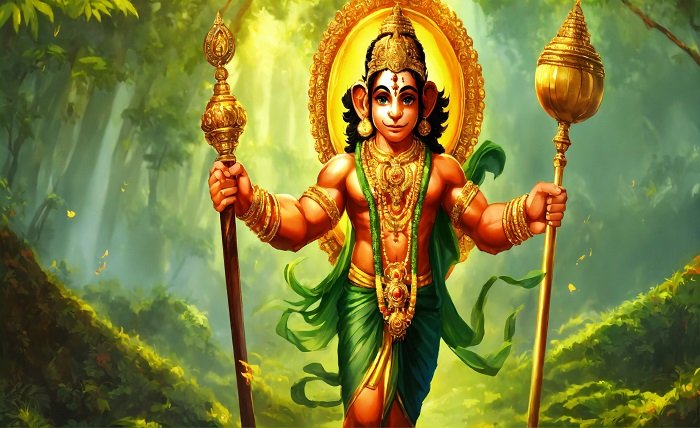The Divine Power of Prayer: The Hanuman Chalisa Lyrics in English
For millions around the world, the Hanuman Chalisa is more than a hymn; it is a powerful spiritual anchor, a source of immense strength, and a profound expression of devotion. Composed by the 16th-century poet-saint Goswami Tulsidas, its forty verses (Chalisa meaning ‘forty’ in Hindi) are a majestic ode to Lord Hanuman, the epitome of devotion, strength, and selfless service. While its original Awadhi language is melodious and potent, accessing its deep wisdom requires understanding, which is where finding the Hanuman Chalisa lyrics in English becomes essential. For a global audience, seekers, and those not fluent in Hindi, exploring the Hanuman Chalisa lyrics in English through transliteration and translation is the key to unlocking the transformative power of this sacred text. This journey into the Hanuman Chalisa lyrics in English allows everyone to connect with its universal message of courage, faith, and unwavering dedication.
The Historical Origin and Significance of the Hanuman Chalisa
The genesis of the Hanuman Chalisa is itself a tale of divine intervention and devotion. Its author, Tulsidas, was a ardent devotee of Lord Rama. Legend has it that when he was imprisoned by the Mughal emperor Akbar for his unwavering faith, he began composing the Hanuman Chalisa in prison. It is said that upon completing the forty verses, an army of divine monkeys (vanaras) descended to cause havoc in Akbar’s court, compelling him to release Tulsidas immediately. This miracle cemented the hymn’s reputation as a powerful protective chant. The Hanuman Chalisa lyrics in English transliteration strive to preserve the phonetic sanctity of these original verses. Tulsidas wrote in Awadhi, a dialect of Hindi, making the text accessible to the common people of the time, and today, the Hanuman Chalisa lyrics in English continue that mission of accessibility. The Chalisa is not just a poem; it is a condensed version of the entire Ramayana, highlighting Hanuman’s role and his divine qualities, making it a cornerstone of Hindu devotional practice.
Why Recite the Hanuman Chalisa? Spiritual and Practical Benefits
The regular recitation of the Hanuman Chalisa is believed to confer countless blessings upon the devotee. The primary benefit is the cultivation of fearlessness and courage. Hanuman is the destroyer of fear (Bhay-bhanjan), and chanting his glories is said to infuse the devotee with immense inner strength to face life’s challenges. By engaging with the Hanuman Chalisa lyrics in English, a devotee can intellectually and emotionally connect with these themes, reinforcing their intent. It is also renowned for removing negative energies, obstacles (vighna), and planetary afflictions, particularly those associated with Saturn (Shani) and Mars (Mangal). Furthermore, the hymn promotes mental peace, reduces anxiety, and enhances focus and discipline. Understanding the meaning behind the Hanuman Chalisa lyrics in English allows one to meditate on each quality of Hanuman—his devotion, wisdom, and power—thereby inviting those same virtues into one’s own life. It is a holistic practice for spiritual, mental, and emotional well-being.
A Guide to the Structure and Meaning of the Chalisa
Before delving into the full text, understanding the structure of the Hanuman Chalisa enhances its recitation. It begins with two introductory couplets (Dohas), followed by forty verses (Chaupais), and concludes with a final Doha. The initial verses are invocations to the gurus and Lord Hanuman himself. The main body of the Hanuman Chalisa lyrics in English transliteration elaborates on Hanuman’s birth, his divine powers, his heroic exploits in the Ramayana—such as finding Sita in Lanka and carrying the mountain with the healing herb—and his unwavering devotion to Lord Rama. Each verse is a powerful affirmation. The concluding prayer asks for Hanuman’s constant presence in the devotee’s heart and life. Following along with the Hanuman Chalisa lyrics in English translation while reciting or listening helps to internalize this narrative, transforming the chant from a mere ritual into a deeply meaningful dialogue with the divine.
Hanuman Chalisa Lyrics in English: Full Transliteration (Text Format)
For those who wish to recite the Chalisa in its original phonetic form but read the Roman script, this transliteration of the Hanuman Chalisa lyrics in English is provided. This allows for correct pronunciation and maintains the rhythmic cadence of the hymn.
Doha:
Shri Guru Charan Saroj Raj, Nij Man Mukur Sudhar।
Varnao Raghubar Bimal Jasu, Jo Dayaku Phal Chari॥
Buddhiheen Tanu Janike, Sumirau Pavan-Kumar।
Bal Buddhi Vidya Dehu Mohi, Harahu Kalesh Bikaar॥
Chalisa:
Jai Hanuman Gyan Gun Sagar
Jai Kapis Tihun Lok Ujagar
Ram Doot Atulit Bal Dhama
Anjani-Putra Pavan Sut Nama
Mahabir Bikram Bajrangi
Kumati Nivar Sumati Ke Sangi
Kanchan Baran Biraj Subesa
Kanan Kundal Kunchit Kesa
Haath Bajra Au Dhvaja Birajai
Kaandhe Moonj Janeu Saajai
Shankar Suvan Kesari Nandan
Tej Pratap Maha Jag Vandan
Vidyavan Guni Ati Chatur
Ram Kaj Karibe Ko Aatur
Prabhu Charitra Sunibe Ko Rasiya
Ram Lakhan Sita Man Basiya
Sukshma Roop Dhari Siyahi Dikhwana
Bikat Roop Dhari Lanka Jarawa
Bheem Roop Dhari Asur Sanhare
Ramchandra Ke Kaj Sanware
Laye Sanjivan Lakhan Jiyaye
Shri Raghuvir Harashi Ur Laye
Raghupati Kinhi Bahut Badai
Tum Mum Priya Bharat-Hi Sam Bhai
Sahas Badan Tumharo Jasa Gaave
Asa Kahi Shripati Kanth Lagave
Sankadik Brahmadi Muneesa
Narad Sarad Sahit Aheesa
Yam Kuber Digpaal Jahan Te
Kavi Kovid Kahi Sake Kahan Te
Tum Upkar Sugreevahin Kinha
Ram Milaye Rajpad Dinha
Tumharo Mantra Vibhishan Maana
Lankeshwar Bhaye Sab Jag Jaana
Yug Sahasra Yojan Par Bhanu
Leelyo Taahi Madhur Phal Jaanu
Prabhu Mudrika Meli Mukh Maahi
Jaladhi Langhi Gaye Achraj Naahi
Durgam Kaj Jagat Ke Jete
Sugam Anugraha Tumhre Tete
Ram Duware Tum Rakhvare
Hoat Na Agya Binu Paisare
Sab Sukh Lahai Tumhari Sarna
Tum Rakshak Kaahu Ko Darna
Aapan Tej Samharo Aapai
Teenhon Lok Haank Te Kaapai
Bhoot Pisaach Nikat Nahi Aave
Mahavir Jab Naam Sunave
Nase Rog Hare Sab Peera
Japat Nirantar Hanumat Beera
Sankat Te Hanuman Chudave
Man Kram Vachan Dhyan Jo Lave
Sab Par Ram Tapasvee Raja
Tin Ke Kaj Sakal Tum Saja
Aur Manorath Jo Koi Lave
Soi Amit Jivan Phal Pave
Charon Jug Partap Tumhara
Hai Parsiddh Jagat Ujiyara
Sadhu Sant Ke Tum Rakhware
Asur Nikandan Ram Dulare
Ashta Siddhi Nav Nidhi Ke Data
Asa Bar Din Janki Mata
Ram Rasayan Tumhare Pasa
Sada Raho Raghupati Ke Dasa
Tumhare Bhajan Ram Ko Pave
Janam Janam Ke Dukh Bisrave
Anth Kaal Raghubar Pur Jai
Jahan Janam Hari-Bhakta Kahai
Aur Devta Chit Na Dharahi
Hanumanth Sehi Sarve Sukh Karahi
Sankat Kate Mite Sab Peera
Jo Sumirai Hanumat Balbeera
Jai Jai Jai Hanuman Gosai
Kripa Karahu Gurudev Ki Naai
Doha:
Jo Sat Bar Path Kar Koi, Chutahi Bandi Maha Sukh Hoi।
Jo Yah Padhe Hanuman Chalisa, Hoye Siddhi Sakhi Gaurisa॥
Tulsidas Sada Hari Chera, Keejai Nath Hriday Mahan Dera॥
Hanuman Chalisa Lyrics in English: Meaning and Verse-by-Verse Explanation
Reading the transliteration is powerful, but comprehending the meaning unlocks a deeper layer of devotion. This section provides a summary of the Hanuman Chalisa lyrics in English translation, explaining the core message of key verses.
Introductory Dohas: The singer purifies their mind by reflecting on the guru’s lotus feet and vows to recite the pure glory of Lord Rama. Acknowledging their own lack of wisdom, they remember Hanuman, the son of the wind, to grant them strength, intelligence, and knowledge and remove all sufferings and imperfections.
Verses 1-5: These verses offer salutations to Hanuman, the ocean of wisdom and virtue. They describe his physical form—his golden hue, his earrings, his curly hair, his mighty mace and flag, and the sacred thread across his shoulder. He is hailed as the mighty hero, the incarnation of Lord Shiva, and the son of Kesari and Anjani.
Verses 6-10: They praise Hanuman’s intelligence and eagerness to serve Lord Rama. He is delighted to listen to Rama’s stories, and Rama, Lakshman, and Sita reside in his heart. He assumed a minute form to appear before Sita and a terrifying form to burn Lanka.
Verses 11-15: Hanuman took a colossal form to destroy demons and perfectly accomplished Rama’s tasks. He brought the Sanjivani herb to revive Lakshman, earning immense praise from Lord Rama himself, who declared Hanuman as dear to him as his brother Bharat.
Verses 16-20: The hymn states that even the thousand-headed serpent Shesha cannot sing all of Hanuman’s glories. Sages like Sanak, gods like Brahma, messengers like Narada, and even the guardians of the directions (like Yama and Kuber) cannot adequately praise him.
Verses 21-25: It recounts how Hanuman helped Sugriva by reuniting him with Rama, who bestowed kingship upon him. Vibhishana accepted Hanuman’s advice and became the king of Lanka. The famous feat of Hanuman leaping across the ocean to Lanka, mistaking the sun for a sweet fruit, is described.
Verses 26-30: These verses affirm that with Hanuman’s grace, all difficult tasks in the world become easy. He is the guard at Lord Rama’s door, and no one can enter without his permission. All happiness is found under his sanctuary, and with him as a protector, there is nothing to fear.
Verses 31-35: Hanuman’s name wards off ghosts and evil spirits. Chanting his name incessantly destroys all diseases and pain. Those who remember him with thought, word, and deed are delivered from all crises. He is the fulfiller of all desires, granting the fruit of immortality.
Verses 36-40: His glory is celebrated through all four ages (Yugas), and he is the guardian of saints and sages and the destroyer of demons. Mother Sita granted him the boon to bestow the eight supernatural powers (Siddhis) and nine treasures (Nidhis). The final verses are a personal prayer: through Hanuman’s worship, one reaches Rama, forgets the sorrows of countless lifetimes, and achieves ultimate salvation.
How to Chant the Hanuman Chalisa: Rituals and Best Practices
While the sincere recitation of the Hanuman Chalisa lyrics in English or Hindi is beneficial in itself, following certain practices can enhance the experience. Traditionally, it is chanted in the morning after a bath or in the evening. Facing east or north is considered auspicious. Many devotees light a lamp (diya) with sesame oil or ghee before an idol or picture of Hanuman. Chanting with a clear mind and focused intention (sankalpa) is more important than perfection. One can recite it 1, 3, 7, or 108 times, depending on their capacity. Using a mala (rosary) can help maintain count. The key is consistency (nitya). Even reciting it once a day with full understanding, perhaps by reading the Hanuman Chalisa lyrics in English meaning, can bring profound peace and strength into one’s daily routine.
Incorporating the Hanuman Chalisa into Your Daily Life
The wisdom of the Hanuman Chalisa is not meant to be confined to a prayer room; it is a guide for everyday living. The virtues of Hanuman—selfless service (seva), unwavering focus (on Rama), immense physical and mental strength, and humble devotion—are qualities we can all cultivate. When facing a fear, one can remember the line “Bhoot Pisaach Nikat Nahi Aave, Mahavir Jab Naam Sunave” (Evil spirits cannot come near when one utters the name of Mahavir Hanuman). When feeling weak, reflect on “Bal Buddhi Vidya Dehu Mohi” (Grant me strength, wisdom, and knowledge). By meditating on the Hanuman Chalisa lyrics in English translation, we can draw practical inspiration. It teaches resilience in the face of obstacles, loyalty in relationships, and the power of dedicating one’s actions to a higher purpose, making it a timeless manual for a righteous and courageous life.
Conclusion
The Hanuman Chalisa is a timeless spiritual treasure, a bridge between the devotee and the divine. Its power lies not just in its sacred sound vibrations but also in its profound meaning, which glorifies the ideal of pure, selfless devotion. For a global audience, the pursuit of the Hanuman Chalisa lyrics in English is a beautiful and valid path to embracing this power. Whether through phonetic recitation or deep study of its meaning, engaging with this holy hymn invites the blessings of Hanuman into one’s life—blessings of courage to overcome obstacles, wisdom to choose rightly, and devotion to walk a purposeful path. It remains an eternal source of strength, peace, and fearlessness for all who chant it with a sincere heart.
FAQs
1. Is it effective to recite the Hanuman Chalisa using English transliteration?
Yes, absolutely. The devotion and intent (bhaav) behind the recitation are what matter most. Using the Hanuman Chalisa lyrics in English transliteration allows those unfamiliar with Devanagari script to recite the original sounds correctly, which is considered powerful.
2. Where can I find an audio recording to help me pronounce the Hanuman Chalisa correctly?
There are countless recordings available on YouTube, Spotify, and other music streaming platforms. Searching for “Hanuman Chalisa with English lyrics” or “Hanuman Chalisa pronunciation guide” will yield many results featuring renowned singers and spiritual leaders.
3. What is the best time to recite the Hanuman Chalisa?
Tuesdays and Saturdays are considered especially auspicious for Hanuman worship. The most recommended times are early morning (Brahma Muhurta) or sunset. However, you can chant it with sincerity at any time of day.
4. Can I listen to the Hanuman Chalisa instead of reciting it myself?
Yes, listening to the Hanuman Chalisa (called shravan) is also a highly beneficial and potent practice. It helps calm the mind, absorb the positive vibrations, and learn the correct pronunciation for your own recitation.
5. How long does it take to see the benefits of chanting the Hanuman Chalisa?
The benefits are often immediate in the form of mental peace and reduced anxiety. For more specific spiritual or material benefits, consistency is key. Traditional texts suggest that reciting it with faith 108 times for 40 days (a mandala) is a powerful spiritual practice.







